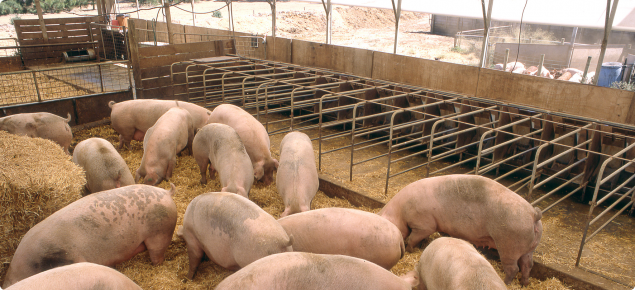What are mycotoxins?
The word comes from 'myco' for fungi and 'toxin' for toxicant of fungal origin. Fungi lack chlorophyll, leaves, true stems and roots, reproducing by spores and living as a saprophyte (a fungus or bacterium that lives and feeds on dead organic matter) or parasite. Mycotoxins are secondary toxic metabolites produced by organisms of fungal origin.
What is the difference between a mould and a fungi?
Fungi include moulds, mildews, rusts, yeasts and mushrooms. Mould is the coating or discolouration caused by various saprophytic fungi that develop in a damp atmosphere on the surface of stored food and fabrics etc.
Conditions that increase the chance of mycotoxins occurring
- cereals left after screening
- damaged or broken grains
- storage of moist grain (>13%)
- storage in damp, warm conditions (relative humidity >80%)
- damaged or leaking feed bins
- fluctuating temperatures
- liquid feeding if it encourages growth of fungi
- poor storage hygiene.
Is there a safe level of mycotoxins?
There is no safe level of a mycotoxin because if one mycotoxin is detected then there could be others present that have not been detected. A combination of low levels of some mycotoxins in feed can be more dangerous than high levels of individual toxins.
What effect can mycotoxins have on pigs?
There are many different types of mycotoxins and these have different effects on pigs. It is important to remember that there are other factors that may contribute to these problems. Clinical signs in pigs associated with mycotoxins include:
- poor reproductive performance
- vomiting
- decreased feed intake and growth rate
- increased susceptibility to disease.
Why do we hear more about mycotoxins now than we used to?
Global climate change has resulted in unusual weather patterns, with increased frequency of drought, flooding and temperature extremes. These changes in weather all increase the chance of mycotoxin contamination of feed grains. Increased global trading of feed grains also increases the chance that blends of grains will result in combinations of different mycotoxins in a given diet. Improved knowledge and analytical techniques are now available allowing closer monitoring of animal performance, with more stress on the modern animal making it more susceptible to mycotoxins.
Is there a test for mycotoxins?
There are tests for some mycotoxins but not others. Mycotoxins are not spread evenly throughout a sample of grain but tend to be concentrated in areas of high moisture content or high exposure to oxygen. This makes getting a representative sample difficult.
What should I do if I have a load of infected grain?
If you have a load of infected grain you can:
- dispose of the grain
- blend the contaminated grain with a sample of good quality grain to dilute the mycotoxins (but even then the grain should not be fed to either breeding animals or young pigs)
- consult the grain supplier regarding the infected grain and seek an alternative grain supplier until the contamination source of the infected grain is identified and removed.
How can I control mycotoxins?
- diversion to less susceptible species
- processing methods to attempt to clean the grain
- use of mould inhibitors
- dilution with sound grain
- use mycotoxin absorbents.
What are the aspects of a good mycotoxin binder?
- ability to absorb a wide range of mycotoxins
- a low effective inclusion rate
- stability over a wide pH range
- high capacity to adsorb high concentrations of mycotoxins
- high affinity to adsorb low concentrations of mycotoxins
- ability to adsorb within 30 minutes of feeding
- proven in-vivo data
- heat stability during pelleting
- low affinity for vitamins, minerals and other nutrients.


